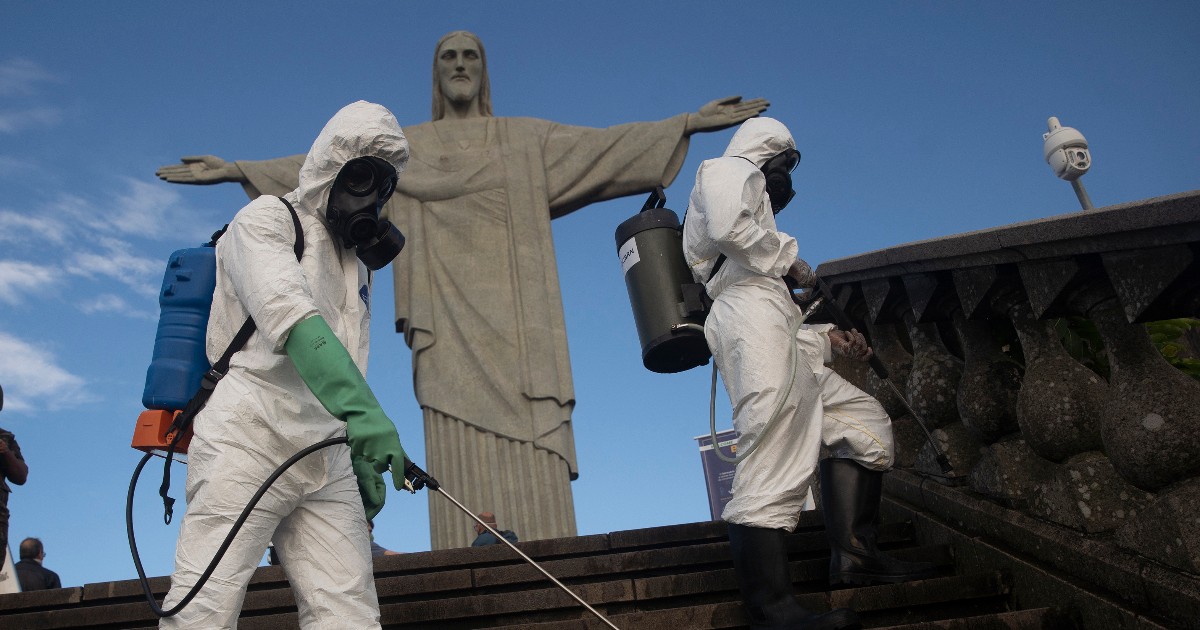While in Italy 18 regions from Monday will be in the yellow zone, some areas of the world continue to worry about the progress of the coronavirus pandemic. This is the case with the Brazil which on Friday alone recorded over 50,000 new cases, with 1244 deaths. The situation is critical, so much so that the teachers of the State of Sao Paulo have called a strike to protest against the reopening of schools, still considered too risky. Also in Greecemeanwhile, further precautions are being taken: in the face of the latest numbers (1194 new positives and 19 deaths), the authorities have decided to tighten the measures for the so-called “red zones” of Attica (the Athens region), Thessaloniki and of the nearby Halkidiki peninsula, introducing a curfew starting at 6pm for the whole weekend, in order to avoid any “aperitif gatherings”. The numbers in the world, on the other hand, give a clear picture: according to the data of the John Hopkins University, which constantly monitors the progress of the pandemic at the global level, confirmed deaths have been over 2.3 million, with over 105 million cases since the beginning of the pandemic. The most affected country is always the United States with 459,571 confirmed deaths and 26,814,845 cases since the start of the pandemic. Meanwhile the European Center for Disease Prevention and Control has new maps released official on Covid, in which the ‘dark red‘to indicate the areas with the highest risk. In Italy, only the autonomous province of Bolzano and Friuli Venezia Giulia are of this color, with an increase that exceeds the threshold of 500 cases per 100 thousand inhabitants. “Dark red” also almost all of the Iberian Peninsula (Spain and Portugal), the South of France, Sweden, the Czech Republic, Latvia, Estonia and Slovenia.
Brazil – The South American state, second in the number of deaths in the world, reached the tragic negative balance of on Friday 230 thousand deaths, with over 1200 deaths in the last 24 hours alone. Even the daily cases still show quite high numbers: 51319 new positives identified on Friday, for a total of 9,449,088 infected with Sars-CoV-2 in the country. However, the numbers of the states of Rio Grande do Norte and Roraima are missing, which have not released the latest data. The situation is still worrying, which is why the reopening of schools, scheduled for next Monday with 35% of pupils in attendance, is not practicable according to the teachers. The teachers’ union of the State of Sao Paulo of Brazil, Apeoesp, in fact, proclaimed a strike, approved by over 90% of the virtual assembly that put the decision to the vote. According to the teachers, “there are no conditions for a safe return”. Schools, teachers argue, “do not have the necessary infrastructure”, and a return to class “it could have serious consequences“. Full availability, however, to continue the lessons at a distance. Meanwhile, the administration of the vaccine continues in Brazil: 3.3 million doses already administered, of which 1962 second doses.
Greece- Even Greece, despite the numbers that are not as alarming as other European states, is running for cover. From this weekend, and until the weekend of 13-14 February, in the area of Athens, Thessaloniki and the Halkidiki peninsula all citizens will have to go home by 6pm (and no longer at 10pm) until 5am. To date, in fact, Greece has registered 5922 victims, with a daily increase in cases (updated to Friday 4 February), of 1195 new positives. Other areas of the country, such as Patras, Crete and other municipalities in central Greece, have now entered the “red zone”, with the prohibition therefore on moving from one municipality to another.
China – Meanwhile, the Chinese drug authority has given the “conditional” green light to a second vaccine produced by Sinovac. The ok came after a series of tests in China and abroad, for example in Brazil and Turkey, as the pharmaceutical company explained. The “efficacy and safety” of the new vaccine, however, still need further confirmation.
Netherlands – There are over a million cases of Covid-19 in the Netherlands since the start of the pandemic. The Guardian reports this, citing data from the Dutch Institute for Public Health: 4,075 new infections that bring the total number of cases to 1,001,826 in the 11 months since the virus was first discovered in the country.
–


